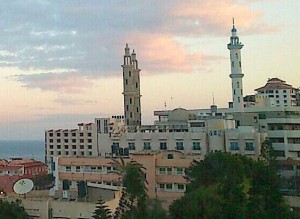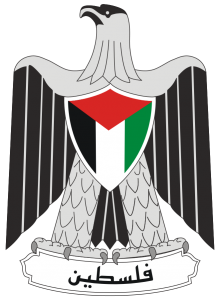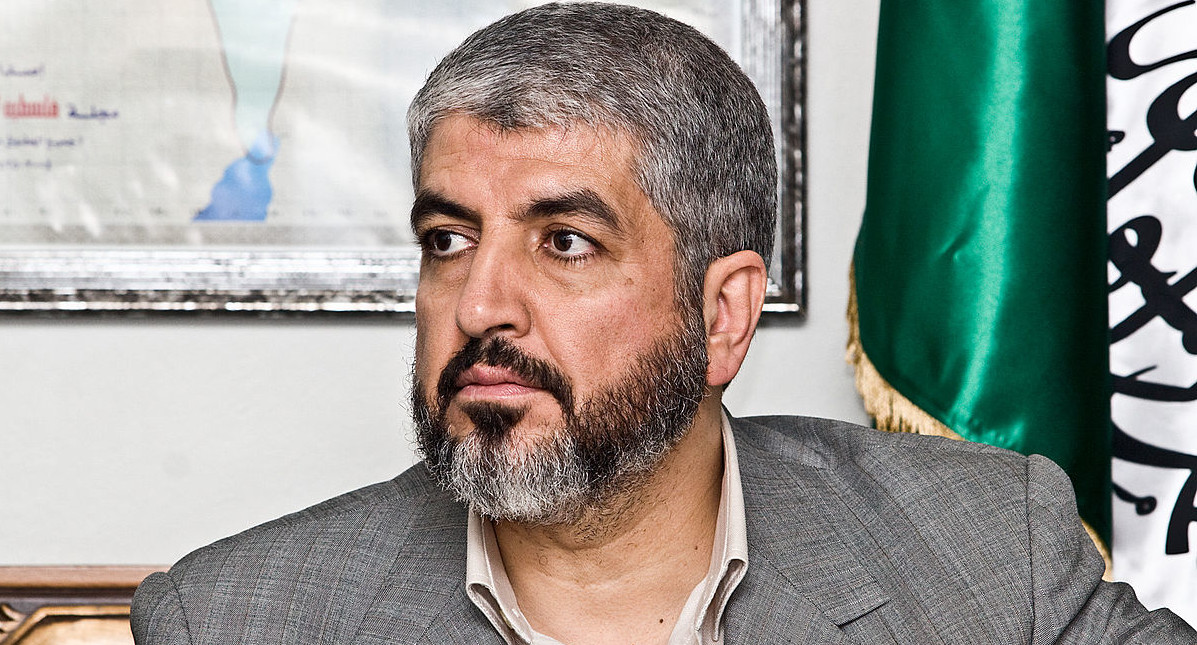Deeming the Palestinian Authority’s recent thoughts of reconciliation with Hamas helpful or harmful is premature at best. Such a determination of viability requires an important acknowledgment of the distinction between rhetoric and reality and a careful evaluation of Hamas’ changing role in conflict resolution in the context of recent and past Israeli-Palestinian and Hamas-Fatah peace negotiations.
President Mahmoud Abbas’s decision highlights the need for unity in consolidating Palestinian political strength along with a realization that continuing US-sponsored talks would be similar to having “Iran resolve Iraq’s Sunni-Shiite divide.” The decision may also suggest that Abbas has learned from previous acts of disobedience toward the Americans – such as signing on to more than a dozen international conventions that could give Palestinians greater leverage against Israel – no longer has the political repercussions it once did. With John Kerry allegedly calling Israel an “apartheid state” (though subsequently retracting his statement), an approach stressing human rights violations as opposed to territorial entitlements and political affiliations may be most feasible for Palestinians.
Abbas’s decision behind the reconciliation seems to be an attempt to fill a gap constantly overlooked by previous US-brokered talks: the deliberate exclusion of Hamas from a legitimate place in Palestinian politics. The US’s refusal to include Hamas, an organization with the ability to obstruct the peace process by violent means, proved to be a fatal flaw in the talks as both hardline Zionist and pro-Palestinian factions sought the demise of the Oslo peace process.
Rhetorically, Hamas’s charter is ripe with “anti-Semitic language and an unambiguous embrace of constant violence until an Islamic state is established” in Palestine. The Islamic religion is equated to the national state in a manner similar to the basis on which Israel lies. Here, a discrepancy between theory and practices emerges rooted in a historically conflicting relationship between religion and state. If Hamas’s charter was an action plan, Hamas and Israel would’ve been at constant war over the past quarter century. Hamas’s claim to Islam, however, is heavily underscored by an inherently secular political agenda. With religion as its rhetorical tool, Hamas’s true nature is one of a political movement with political goals: power and political inclusion primarily.
Hamas’s constant exclusion from the political arena, along with its hardline policy (although the former may have spurred the latter) has encouraged a vicious cycle of violence and exclusion. It is important to analyze Hamas’s beginnings, the peace talks of the 1990s, the first Palestinian elections in 1996, the Second Intifada and Hamas’s victory in 2006 to evaluate the recent decision as Hamas’s strategy and political views have differed to a greater extent than recognized by the “amnesiac, echo-chamber culture of mainstream media analysis.”

Hamas (al-Haraka lal-Mukawima al-Islamiyya) was born from the ranks of the Palestinian Muslim Brotherhood on December 14, 1987 shortly after the beginning of the First Intifada. It was created as an alternative to the militant yet secular Palestinian Liberation Organization (PLO) and was implicitly supported by Israel for being “non-activist” and was often criticized by hardline Palestinians for complying with Israel. After the First Intifada, Hamas separated from the PLO when PLO chairman Yasser Arafat agreed to participate in the Madrid Conference disregarding Hamas’s exclusion. In 1993, Oslo I attempted to recognize the PLO as the “sole legitimate representative of the Palestinian People.” Hamas subsequently issued a statement condemning the accords asking “why the occupying powers.. don’t allow the opposition, and particularly Hamas, to express their views.”
From 1994 to 2005, in retaliation to the Goldstein Massacre, Hamas intermittently launched suicide bombings against Israelis inside Israel. In 1995, however, Hamas was provided the opportunity to share power with the PLO provided it would “refrain from violent attacks against Israel.” A year later, Israel assassinated Hamas’ head bomb maker Yahya Ayyash. Although Hamas did not retaliate immediately, it decided to boycott the 1996 Palestinian elections. Hamas’s inability to rally a national boycott of the Palestinian elections caused it to realize its minimal support base (decreasing from 14 percent to 6 percent between 1994 and 1996) amongst the three-way power struggle between Israel, the PLO and Hamas and seek new ways of being heard.
In March 2002, following the endorsement of the Arab Peace Initiative (API), a Hamas suicide bomber blew up at a communal Passover seder at the Park Hotel in Netanya killing 30 and wounding 150 elderly Israelis, including holocaust survivors. The Arab States unanimously agreed on the API, but Sheikh Yassin, the leader of Hamas, issued a statement saying that the attack was “a message rejecting the Arab League proposal.” A month later, however, Hamas leader Sheikh Ismail Shanab called Hamas’ charter merely “theoretical” and stated that Hamas would accept the Peace Initiative. The discrepancy between Sheikh Yassin and Sheikh Shanab’s public perspectives reflects diverging views even within Hamas itself. A subsequent course of agreements over 2002 and 2003 led to Hudna or ceasefire between Fatah, Islamic Jihad and Hamas and a demand for the international community to stop Israelis from building settlements and engaging in violence.
In 2003, newly elected leader, Mahmoud Abbas, took the time to visit Hamas and encourage the organization to participate in Hudna. The change in policy toward Hamas from Arafat’s disregard to Abbas’s compromise finally provided Hamas “a political system to participate in.” After an assassination attempt on Hamas leader Abdel Aziz al-Rantisi’s life, the leader claimed “By God, we will not keep a single Jew in Palestine.” President Abbas condemned the attack as an Israeli terrorist attack and a mere 20 days later, Hamas agreed to the ceasefire.

Despite Hamas compliance, Israel refused Hudna and on the 8th of August 2003 initiated a series of back and forth attacks that resulted in the death of Sheikh Ismail Yassin. In 2004, Sheikh Abdel el-Aziz Rantisi himself proposed a ceasefire (refer to linked article titled “Hamas Ceasefire Proposal: Peace or Pause?) that was justifiably, but hypocritically rejected by Israel as “insincere” and a “smokescreen” for Hamas rearmament. Continuing its policy of targeting Hamas leaders, in 2004, Israel assassinated both Yassin and Rantisi, thus rendering Hamas weak and “in a state of shock.”
Only after Arafat’s death in November of 2004 did Hamas obtain the space for involvement in politics and ceasefire advocacy. Concomitant with its newly found political opportunity, Hamas’s openness to compromise increased and in Sharm el-Sheikh, Egypt, they established a new ceasefire until the end of 2005. Although Hamas did maintain “a new unilateral Palestinian cease-fire for more than a year,” on the 28th of August 2005, it engaged in a suicide attack in Be’er Sheva during Israel’s unilateral withdrawal from Gaza. This action can be interpreted as in line with Hamas’s sentiment that an Israeli withdrawal from all Occupied Territories would not suffice. The unilateral nature of the agreement was also undermined by the fact that Hamas did not hold equal political power in Palestine and could therefore be viewed as “symbolically expressing its discontent at being ‘left out’.”
December of 2005 played a critical role in illustrating Hamas’s willingness to politically participate. Following a series of intensive Israeli attacks in Gaza in response to Islamic Jihad strikes, all Palestinian factions, except Hamas, decided to break the truce. Hamas said it would maintain the truce “until the Palestinian elections had ended in January and then reassess.”
By 2006, the Palestinian population had grown tired of Fatah corruption. Hamas intuitively gauged its political pull, did not boycott the elections and won 74 seats in the 132-seat Palestinian government. Although theoretically maintaining its refusal of a “long-term Hudna,” Hamas’s practical proposals to Israel included offering a long-term ceasefire in exchange for Israel pulling out of the territories occupied in 1967. While,Israel’s official response to Hamas remained unchanged and the Israeli government refused to recognize the legitimacy of the Hamas government, tensions between Fatah and Hamas evolved into violence. Following opposition both domestically and internationally, Hamas rejected the 2005 ceasefire, captured Israeli soldier Gilad Shalit in 2006 and spurred a total Israeli blockade on the Hamas-dominated Gaza Strip in 2007.
Despite increased Fatah-Hamas tension, Fatah finally agreed to a national unity government including the two parties in 2006. The solidarity was short-lived as Fatah deployed 3,000 troops/security forces against Hamas and supported by Israeli soldiers. As evident, a willingness to embrace Hamas politically has accompanied a desire to comply with moderate standards despite its radical charter.
The recently discussed reconciliation efforts between Fatah and Hamas (despite Fatah still persecuting Hamas supporters) may provide Palestine with a long-needed solidarity. Hamas is currently unable to support Gaza after recent turmoil in Syria and Egypt – two nations that have “in the past provided a financial lifeline to the Hamas government.” Due to US sanctions on Iran, Tehran has also reduced its financial support of Hamas. Furthermore, the Israeli blockade continues to prevent the free flow of goods to Gaza along with a near-isolation of Palestinians from the global community.
For the PA, no long-term solution can be reached without Hamas compliance and due to diminishing Hamas popularity; Fatah is likely to win the upcoming election. Hamas has also come to terms with the fact that regardless of its charter, it cannot feasibly pose an existential threat toward Israel. Although Israel continues to regard Hamas a terrorist organization, the Israeli government has constantly engaged in deals regarding prisoner exchanges, information and trade over the years. The recent union of Hamas and the PA will impede Israel’s “divide and conquer” policy, while providing basic support to the people of Gaza.
Perhaps by uniting with Hamas, the PLO may be perceived as legitimizing terrorism and undermining their own cause. But it was only a mere two decades ago that Israel, the United States and Europe deemed PLO a terrorist organization. The Palestinian-Israeli conflict is one historically ridden with controversy and contradiction that is often not detailed and supported by mainstream media. Official labels of “terrorism” need to be evaluated in the context of current international negotiations (and lack of) along with patterns in Hamas’s behavior before judgments are made regarding the actions of either Palestinian or Israeli factions.
